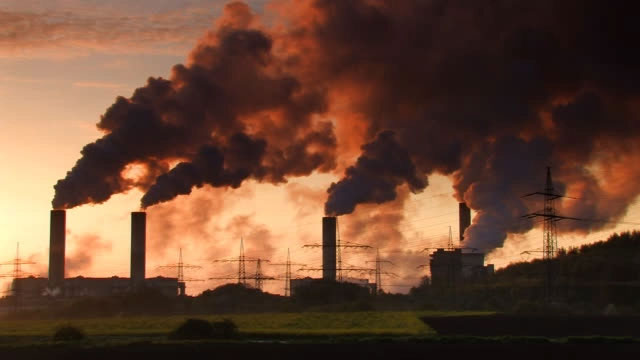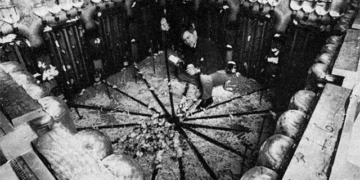The White House has recently approved a five-year plan to explore ways to reduce the amount of sunlight reaching the Earth, thereby limiting global warming effects. Documentation from the White House indicates that a dedicated fund for the project, which aims to reflect sunlight back into space, has garnered the attention of climate organizations both within and outside the United States.
The plan will investigate various methods to limit sunlight, including spraying tiny particles in the form of mist into the stratosphere to create a “mirror” that reflects sunlight. Other options will continue to be considered as scientists further analyze the atmosphere and the impacts of these methods on Earth.
In reality, some approaches, such as releasing sulfur dioxide into the atmosphere, could have detrimental effects on both human health and the planet. However, according to scientists, those who have raised concerns about the potential overuse of sunlight-blocking materials in the atmosphere must weigh these risks against the fact that the Earth is warming at an alarming rate.
In other words, we may need robust measures to combat the phenomenon of global warming, which is gradually slipping out of control.

Scientists aim to mitigate global warming by creating a “mirror” to reflect sunlight – (Image – Internet).
Chris Sacca, founder of the climate technology investment fund Lowercarbon Capital, welcomed the positive signals from the White House. He told CNBC: “Reflecting sunlight has the potential to protect the quality of life for billions of people, and the indication from [the White House pushing the project] shows they are advancing research so that future decisions are based on science rather than geopolitical motives.”
Professor David Keith from Harvard University, who has been researching this aspect since 1989, believes that the sunlight reflection project is gaining increasing attention. He sees encouraging signals from various investment funds and climate change councils… organizations that seem to agree with a project that appears to be straight out of a science fiction novel.
However, it must be emphasized that reflecting sunlight will not completely resolve the issue of climate change; the top priority remains the reduction of greenhouse gas emissions.
Three Methods to “Reduce the Dose” of Sunlight for Earth
Professor Keith notes that the idea of reflecting sunlight first appeared in a report submitted to U.S. President Lyndon B. Johnson in 1965, titled “Restoration of Our Environment Quality”. The project will begin by dispersing mist particles over the ocean surface, with an estimated cost of $100 per square mile (equivalent to 2.6 km2). The report specifies that every 1% increase in the Earth’s reflectivity would cost $500 million per year, a figure that, while not modest, is entirely justified considering the “extraordinary importance of climate to the economy and humanity.”
Estimated costs have risen significantly in recent years, with current figures reaching up to $10 billion per year to reduce global average temperatures by 1 degree Celsius. This billion-dollar figure remains within an acceptable range compared to other methods of mitigating climate change.

Efforts to limit emissions must be prioritized – (Image iStock).
A report published in March 2021 by the National Academy of Sciences, Engineering, and Medicine outlines three top potential methods to reduce the amount of sunlight received: spraying mist into the stratosphere, brightening marine clouds, and thinning cirrus clouds.
The first method, spraying mist, would involve aircraft flying to altitudes of approximately 15-50 km above sea level and spraying a thin layer of mist into the atmosphere, reflecting some sunlight away from the Earth’s surface. It is anticipated that the mist layer would remain in the stratosphere for about 6 to 24 months. According to a scientific report written by Professor Edward A. Parson, this method is “quick, inexpensive, and imperfect.”
“Speed is crucial. No climate change mitigation method is quick. It’s inexpensive because it’s very cheap. And it’s not perfect because we can’t make [this method] effective […] The reason it’s quick is that it’s not perfect, and there’s no way to fix that,” Professor Parson told CNBC.
One of the proposed compounds for mist spraying is sulfur dioxide, as we are already aware of SO2‘s cooling potential from volcanic eruption events. In 1991, the eruption of Mount Pinatubo released thousands of tons of SO2 into the stratosphere, causing global temperatures to drop by 0.5 degrees Celsius almost immediately.

The ash cloud reaching over 20 km high was the result of the eruption of Mount Pinatubo on June 16, 1991 – the second largest eruption of the 20th century – (Image: Getty Images).
Emissions from fossil fuel combustion, particularly coal, also release significant amounts of SO2 (sulfur reacts with oxygen when burned, forming sulfur dioxide). Before it falls to the ground as acid rain, SO2 in the atmosphere partially blocks sunlight from reaching the Earth’s surface. Inadvertently, our greenhouse gas emissions have somewhat limited the amount of sunlight that warms the Earth. However, according to some scientists, SO2 may not be the best option, and future research will soon identify more optimal sunlight-reflecting compounds.
The second method – brightening marine clouds – would enhance the reflectivity of cloud clusters hovering near the ocean surface by spraying sea salt crystals into the atmosphere. According to Professor Parson, this method has not been widely supported due to its effects lasting only a few hours to a few days, and the area covered by the salt crystals remains limited.
The third method mentioned in the 2021 report is thinning cirrus clouds – those clouds floating at altitudes of 6-13 km above sea level – which would help disperse heat at the Earth’s surface. However, this method does not reflect sunlight, so it may not be prioritized.
Potential Risks
The aforementioned methods carry significant risks, especially the proposal to spray SO2 into the stratosphere. According to Professor Parson, introducing sulfur dioxide would “affect ozone chemical reactions and could slow the recovery process of the ozone layer.” Additionally, SO2 in the atmosphere would return to Earth as acid rain, impacting agricultural land, water sources, and local ecosystems. Furthermore, sulfur in the atmosphere could exist as fine particulate matter, leading to respiratory illnesses.
Scientists must weigh these risks against the benefits of reflecting sunlight. Some experts argue that we are already introducing SO2 into the atmosphere through fossil fuel combustion, making it an acceptable reality to “live with the flood.”
According to other experts, these methods need to be approved by lawmakers and have broad support from communities. Efforts must be made to inform communities that these are viable methods, avoiding the spread of misinformation and rumors that could undermine global common interests.


















































